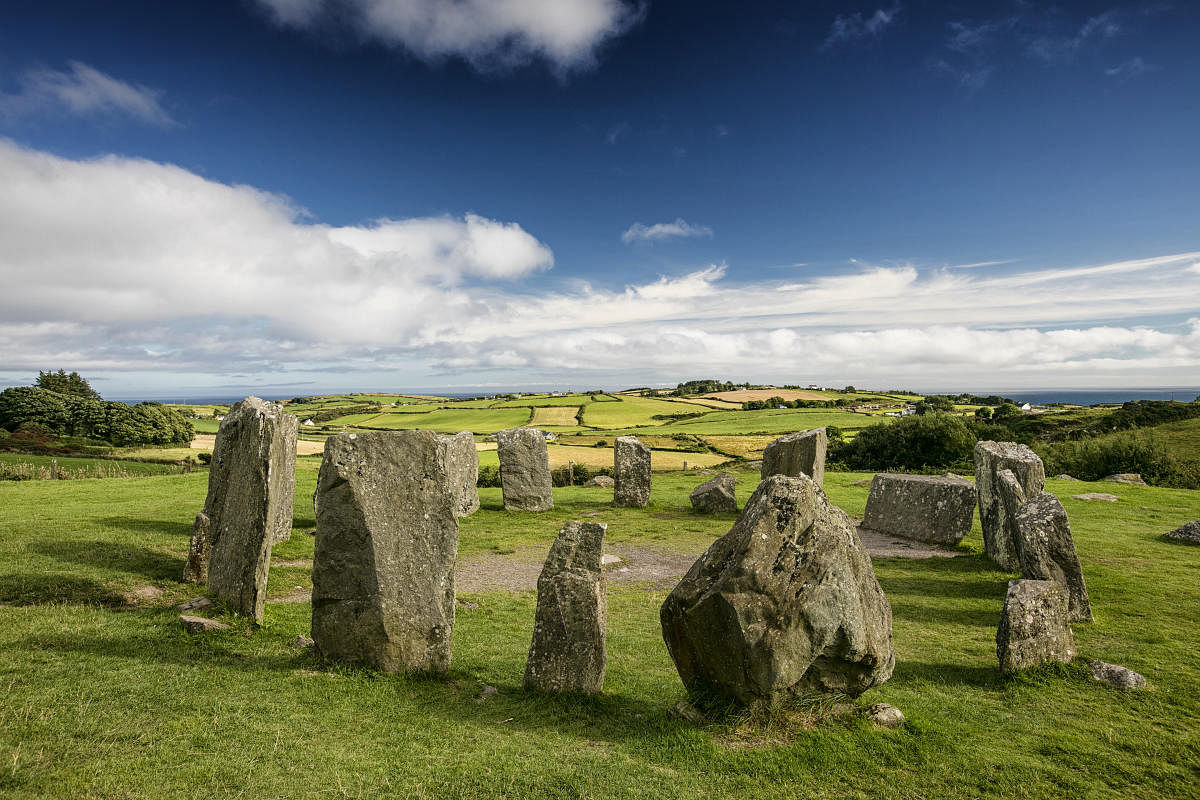
Sitting pretty on River Lee, Cork in southwest Ireland is a laidback city that the locals refer to as the real capital of Ireland. It’s a cosmopolitan city and being a university town, it has a buzzing energy to it. It has undergone quite a transformation in the past few years with the craft beer scene picking up, its waterfront being revitalised, and its food scene arguably the best in the country. It still retains everything that makes it the quintessentially Irish city — snug pubs, live music, and jovial locals. And that’s not all. Go on a day trip to West Cork to take in a picturesque seaside town, a historic fort, and an ancient stone circle. Here’s how to make the most of your time in Cork, Ireland.

Cityscape
Cork is a compact city so you can cover many of the attractions on foot. Begin in the Shandon neighbourhood at St Anne’s Church. Built in the 18th century, the church is situated on a hill overlooking the city and River Lee. Its tower is a city landmark and displays a clock face on each of its four sides. Because the clocks all tell a different time, the tower is called the Four-Faced Liar. You can ring the church bells, called Shandon Bells, and also climb 132 steps up the tower for a 360° view of the city. The 19th-century, three-spired St Fin Barre’s Cathedral is also worth a look. This Gothic Revival style Anglican cathedral is dedicated to the city’s patron saint. There’s also the Cork City Gaol (penitentiary) if you’re into that sort of a thing, and the 400-year-old Elizabeth Fort where you can walk the ramparts for great city views.
But the real charm of Cork lies in wandering its quaint streets. River Lee’s quay is flanked by colourful facades, as is Oliver Plunkett Street, which is a shopping street lined with small, independent shops.
A bit outside the city centre is another must-visit location — University College — Cork’s sprawling and very green campus dotted with 19th-century Victorian Gothic buildings. Don’t miss the Stone Corridor with its collection of Ogham Stones, which are ancient Celtic-era gravestones inscribed with an early coded form of the Irish language. The UCC campus also houses the architecturally striking Lewis Glucksman Gallery of contemporary art.
Shandon Bridge over the River Lee, Cork City
For culture vultures
Art lovers, head over to Crawford Art Gallery, which is located in an elegant 18th-century, redbrick building that used to be the Cork Customs House. The permanent collection includes casts of classical Greek and Roman statues, stained glass by Harry Clarke, and artworks by Irish artists like J B Yeats (W B Yeats’s brother), Sir William Orpen, and Mary Swanzy. The gallery also has a rotating calendar of exhibitions and offers regular free tours (free admission; crawfordartgallery.ie). After a morning spent walking around the gallery, catch a breather at their chic, airy café over a cup of tea or coffee and some cake or scones. The café opens early so you can even drop in for a hearty Full Irish breakfast.
Another museum worth visiting is the quirky Cork Butter Museum. Cork was the centre of Europe’s butter trade thanks to its lush grazing fields, temperate climate, and long history of dairy farming. The museum is modest but it gives you a little history lesson on butter-making in Cork, along with charming exhibitions on butter-making equipment, retro labels and butter wrappers, and it even has a keg of 1,000-year-old butter. If you visit the city in late autumn, don’t miss the Cork Jazz Festival that has been held every October since 1978. It is Ireland’s biggest jazz event and attracts musicians from all over the world. The 2019 edition will be from October 24-28 (guinnessjazzfestival.com).
On your plate
Dublin may have the bars but Cork sure has the food. Begin your culinary jaunt at the English Market, the largest and oldest covered market in Ireland that dates to the mid-19th century. It is not only known for its architecture but also for the local and artisanal food it offers. A market has existed on this site since 1788. The current building was constructed in 1862 and has an ornamental entrance, a tall arched ceiling, and space for more than 50 traders that offer everything from meat and poultry to seafood to fresh produce to cheese to bakery and confectionery. There’s also a coffee shop, a juicery, and a café-restaurant that has been at the market for the past 25 years. Farmgate Café serves classic Irish dishes like corned beef, tripe, black pudding, and more, all made from produce that’s sourced from the market itself.
Village vibes
While Cork has its many charms, it’s worthwhile to take a day trip out to West Cork for the bracing Irish countryside and the wild Atlantic seaside. Begin with Charles Fort, a 17th-century star-shaped bastion fort with sturdy ramparts that was in active military use until 1922. Large parts of the fort still stand; enter via a drawbridge and take an amble through its grounds, barracks, and a couple of small exhibitions on display. You can even walk parts of the ramparts and get a stunning view of Kinsale Harbour. Next, head to Kinsale, a pretty-as-a-picture seaside village with colourful houses, shops, cafes and restaurants.
Nectar of gods
While in West Cork, make sure to stop by Kinsale Mead Co., Ireland’s first contemporary meadery in nearly 200 years.
Mead is essentially an alcoholic drink made by fermenting honey with water and yeast. Fruits or spices may also be added sometimes.
Mead is known as the nectar of gods and is said to be the oldest alcoholic beverage in the world.